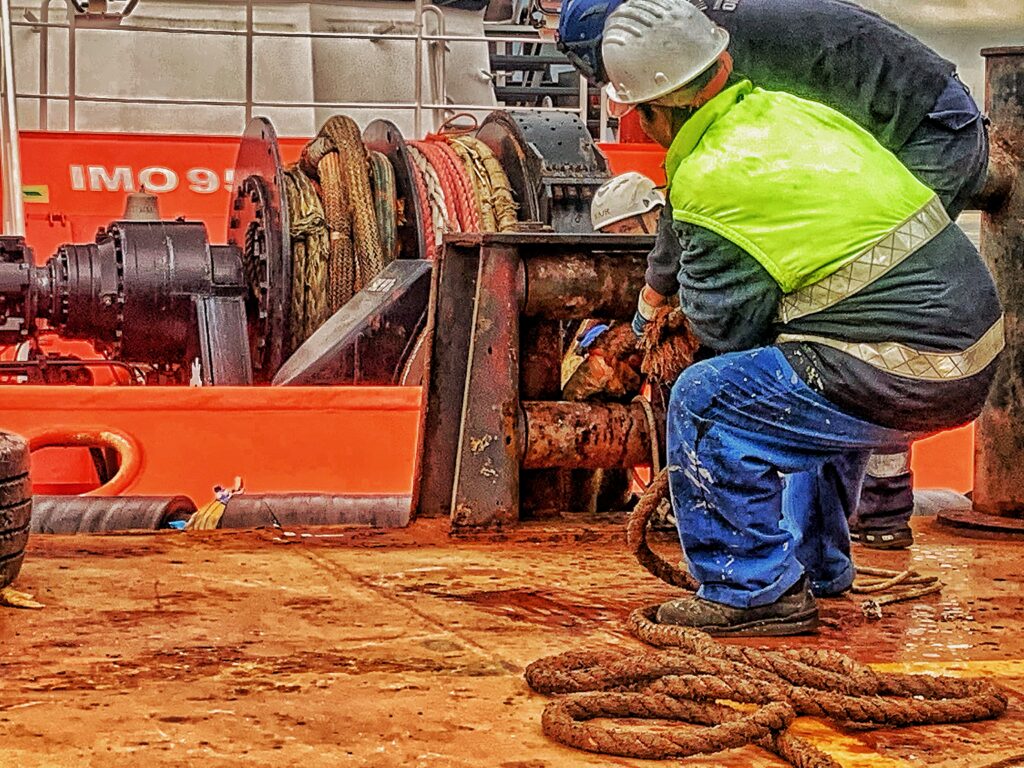The Tug’s Line or the Ship’s Line?
Let’s start by saying that we tend to use the Tug’s line nowadays. Above all, the increase in the tug power led to the need for high performing specific towing lines. When the ship lines were still often used, breakages were far from occasional.

The Tug’s line is specific to his job, and the Tug’s crew check it daily.
Beyond these considerations, there are still advantages and disadvantages in both situations:
Using the Tug’s line:
- You benefit from more excellent reliability;
- The towline length can be easily adjusted/varied even during the manoeuvre;
- Passing the Tug’s towline is more laborious and can take longer, especially in strong wind conditions.
Using the ship’s mooring line:
- Letting go and heaving up the line is faster and safer;
- It is possible to give two ship’s lines, from the starboard and the port, increasing the manoeuvring performance; it is used, for example, during dry-docking where small tug movements have an immediate influence on the ship’s heading;
- It requires a lot of caution when pulling because the reliability of the mooring line is not sure, and, especially at night, it is visually challenging to establish the degree of wear.
Whether it is a ship’s line or a tug’s line, it is a good idea to:
- Fast the stern Tug first; in this way, we have the possibility of using it to help an eventually turning or to stop the vessel, in case of need due to propulsion or steering gears failure; moreover, it is usually easier and faster to make fast the stern Tug rather than the fore one; we also know that, especially in a situation of high speed, the pivot point move forward, making the eventual intervention of the stern Tug much more effective;
- Do not vary speed/course while securing tugs; if necessary, promptly notify the tug captains involved;
- Let go of the fore tug first for the same reasons described above.
Different speech, however, for the release procedures: there are, in fact, substantial differences between the two operations.
The forward Tug must be released quickly to move away from the ship’s trajectory immediately. The towing line is located abaft in the wake of the Tug moving forward, limiting the risk that the line foul in its thrusters. The Tug moving away can recover the line without particular problems.
Conversely, the ship’s crew must release the stern towline slowly; otherwise, the risk of being caught by the Tug’s thrusters becomes high. Master and pilot must coordinate these operations with the tugs’ captains and the crew at the ship’s ends station to guarantee a safe procedure.
